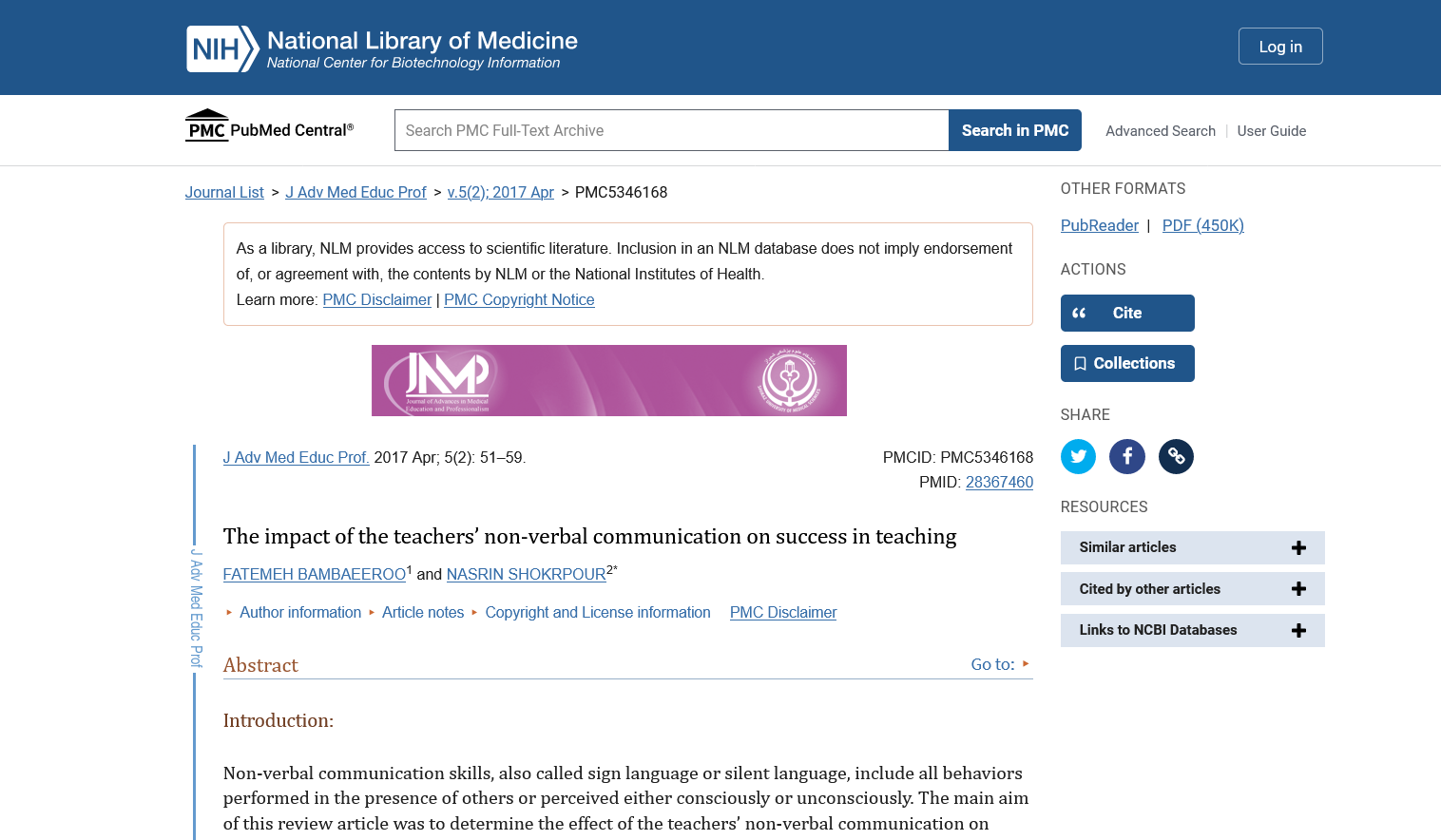How Important is Nonverbal Communication in Language Learning?
Read other articles:
Back to posts
Table of Contents
- 1 The importance of body language and tone
- 2 Other supporting studies in nonverbal communication
- 3 Context, clusters, and congruence
- 4 The “counter-argument”
- 5 What does nonverbal communication mean for foreign language learners?
- 6 Learning by combining verbal and nonverbal communication cues effectively
- 7 How to start learning languages with YouTube videos?

Next time you’re working with flashcards and performing drills in a language class—or using one of the many language learning apps that teach vocabulary, consider this: 55% of communication is body language, 38% is the tone of voice, and only 7% is the actual words spoken.
At least, that’s what one often-quoted study says (more about that below).
Even if people sometimes misunderstand the numbers or use them out of context, most language teachers emphasize the importance of nonverbal cues and other elements of language beyond the literal meanings of words.
Yet, language-learning methods don’t always fall into line with what we know. Nonverbal communication is often completely neglected.
Let’s closely examine the importance of body language, facial expressions, and tone in learning a foreign language, and explore how you can use this insight to improve your language-learning journey.
The importance of body language and tone

Many discussions about the role of nonverbal communication in second language learning start with two studies led by researcher Albert Mehrabian in the 1960s. These resulted in the following statistics emerging:
- 55% of communication is body language
- 38% is the tone of voice
- 7% is the actual words spoken
According to Mehrabian in his 1972 book, Nonverbal Communication: “When there are inconsistencies between attitudes communicated verbally and posturally, the postural component should dominate in determining the total attitude that is inferred.”
The oft-cited percentages above apply only to certain situations and are sometimes used out of context. More emphasis is generally placed on body language, gestures, expressions, and tone when the meaning of verbal communication is unclear.
You may have experienced this during a confusing exchange in a foreign language. If you are hesitating about the intended meaning of a message, you may have found yourself analyzing non-verbal signals to help comprehend it.
It’s no surprise that how you say something is almost always important in communication. Body language, such as hand gestures and expressions (smiles, frowns, etc.) and tone of voice (happy, upset, tired) convey crucial additional meaning to words.
Other supporting studies in nonverbal communication

The above observations are backed up by many studies on the impact of nonverbal communication in teaching environments.
For instance, this study from 2014 found that “integrating non-verbal phenomena into different areas of FLT (foreign language teaching) can be highly valuable”.
A Polish study looked into the importance of cross-cultural differences in gestures and expressions in foreign language learning, stressing “the significance of non-verbal communication in second language discourse”.
The study found that “presenting gestures to students does not only help them become more communicative and comprehensible in their target language but it will also improve the quality of their learning.”
This study from 2017, though not specific to language learning, found that “the more the teachers used verbal and non-verbal communication, the more efficacious their education and the student’s academic progress were.”
Part of the conclusion from this study was as follows: “It is recommended that attention to non-verbal communication skills can make a positive change in the future of a student’s life.”
Context, clusters, and congruence
It’s not always easy to take nonverbal communication at face value. We need to apply certain filters to the signals we receive if we want to be accurate.
The 3 C’s of nonverbal communication can help with this. These are:
- Context: The environment, the history between the people involved, and people’s roles (e.g., the interaction between guest and employee when checking in to a hotel).
- Clusters: We need to identify nonverbal communication gestures in clusters to avoid concluding a person’s mood or intentions from a single gesture or movement (e.g., waving arms around doesn’t always mean a person is angry).
- Congruence: Do the spoken words match the tone and body language? If someone looks angry but says “I’m fine?”, these two signals are incongruent and deeper questioning is usually required to discover the truth.
Keeping the 3 C’s in mind can help us develop a deeper understanding of nonverbal communication when we learn a second language.
The “counter-argument”

On the face of it, the Canadian polyglot Steve Kaufmann disagrees about the “over-riding” importance of nonverbal communication. However, his assertion that the main value of gestures, expressions, and body language is when a speaker’s words are not clear is not so far away from the ultimate conclusions of Albert Mehrabian.
Kaufmann says “To communicate you need words. In some situations, like if something is stuck in your throat, then non-verbal communications take over.”
Kaufmann points out that you can end up becoming like a “caricature” if you try to emulate the body language of people who speak your target language:
“You have to acquire the local social habits naturally, and it only comes after a lot of familiarity with the language and the people. If you try to deliberately imitate an Italian gesticulating, for example, you will just look foolish…. You have to start with the language, with words, the non-verbal communication comes much later or you will just look like a clown.”
Kaufmann’s belief that words rather than nonverbal communication are the starting point for language learners is difficult to disagree with—considering his track record of mastering languages.
It’s possible, then, that the importance of nonverbal communication, while neglected in some quarters, is overplayed in others.
What does nonverbal communication mean for foreign language learners?

How does all this translate to foreign language learning?
The importance of nonverbal communication in imparting meaning shouldn’t be overlooked. If we take both the “for” and “against” arguments presented above, we can conclude something like the following:
Beyond speaking, writing, reading, and listening, nonverbal communication plays a key role in adding depth of understanding to a language — and may take over as the primary form of communication when the meaning of a message is unclear. The higher that you aspire to with your target language, the more important it is to become familiar with the culture and body language of the people who speak it.
How can we apply this?
For language learners who are aiming for moderate to high competency—and especially those targeting near-native-speaker levels—interacting with native speakers is essential. In doing so, learners become more familiar not only with the words, sentences, and structure of the language but also with the accompanying body language and intonation.
One interesting point about tone. If you’re learning a tonal language like Mandarin or Thai, the tones used by native speakers become critical to conveying meaning. In most Western languages, we express words of anger, pleasure, disapproval, etc. with a certain intonation that stresses the emotion we’re feeling. That can be a hindrance in tonal languages, so learners must curb their natural urge to stress certain words in a certain way to convey a certain emotion.
Learning by combining verbal and nonverbal communication cues effectively

To learn a language effectively and become relatively fluent in it, we need more than flashcards and drills—and we won’t achieve it simply by observing people’s gestures!
How can we effectively combine the exposure to native speakers in their natural environments, while fully immersing ourselves in the world of their verbal and nonverbal communications?
Online video.
Video is the next best thing to “being there” because it provides self-motivated learners with a way to learn from native speakers at their own pace, in their own time, and with both verbal and nonverbal cues. In a nutshell, it’s a convenient and engaging way to integrate non-verbal phenomena into the foreign language learning experience.
As self-directed, out-of-class language learning becomes increasingly common, the almost unlimited supply of online videos freely available in every conceivable foreign language on YouTube and other platforms is a great asset.
In his language theories, Stephen Krashen stressed the importance of foreign language learners receiving comprehensible input and compelling (not just interesting) input for effective learning. He postulated that if the input is compelling, people will learn whether they intend to or not.
Online video learning works. Indeed, many consider it one of the most engaging forms of content for learners. The role of video in language learning was closely examined in a 2019 study, which found that “video can be considered a particularly rich source of input. It not only exposes learners to authentic language use but the combination of different input modes such as imagery and audio may also stimulate various aspects of second language learning.”
How to start learning languages with YouTube videos?

Online video, with subtitles in the target language, is an especially effective vehicle for learning a second language.
To help with that, we’ve created a free, AI-based Chrome browser extension that boosts comprehension and helps you develop a complete cloud-based library of new languages while you learn from native speakers in YouTube videos.
Find videos on your favourite topics or watch TV shows/movies in your target language and learn with both verbal and nonverbal cues for a more rounded learning experience.
You still need the self-motivation to put time and commitment into language learning but downloading our free Chrome extension here can make the journey toward language fluency more efficient and effective.
Read other articles:
Back to posts
